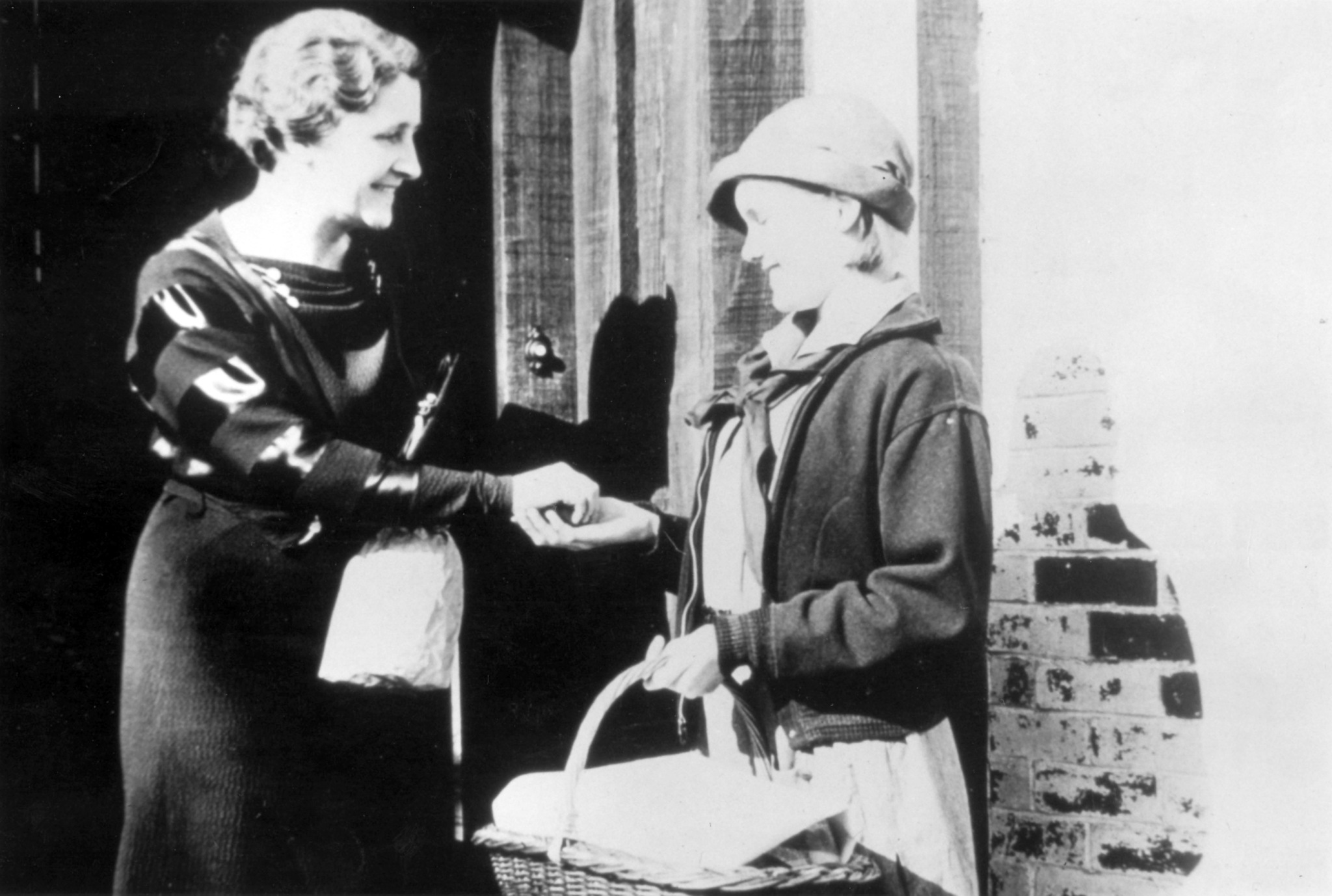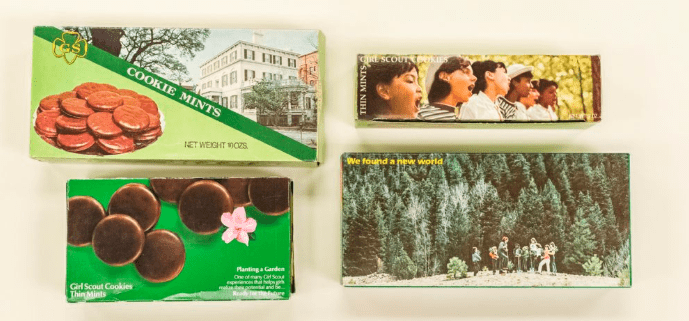
Kelly Parisi, chief communications executive for the Girl Scouts of the USA, is in shock. “I can’t even talk to you anymore!” she squeals after hearing that I, a self-proclaimed Thin Mints loyalist, prefer my cookies to be room temperature rather than frozen. “I mean, it’s the only way to eat them,” she proclaims.
The cult of the Girl Scouts Cookie is very real, and allegiances to specific cookies — and eating methods — can prove die-hard. As Girl Scout Cookie season kicks off, that’s clearer than ever. “If your favorite cookie gets retired, you’re not happy,” Parisi says. “Just ask one of our colleagues about ‘Thank You Berry Munch’ getting retired — he still has complete hysteria about that.”
But those who want their cookies to be the same every year need to work toward their Girl Scout history badges. The cookies have been evolving since the beginning—and when Girl Scout Cookies got their start, there was no such thing as the Thin Mint, Samoa and Tagalong.
According to the organization, the Mistletoe Troop in Muskogee, Okla., baked and sold the first-ever batch of Girl Scout Cookies in their high school cafeteria in 1917. A July 1922 American Girl magazine feature provided a simple sugar cookie recipe, suggesting that they be sold door-to-door for 25 to 30 cents per dozen.

But not every Girl Scout was doing the baking herself.
“Grandma used to bake the cookies,” 83-year-old former Girl Scout Selma Rutledge tells TIME. “I was never the kitchen cooker, I stayed outside.”
Rutledge joined Troop 254 in the small town of Blakely, Ga., in the 1940’s. “They wanted us to be something,” she says. “Selling cookies taught me how to meet people and how to present myself. It gave me the courage to stand up and speak up.”
And so she would wrap five, maybe six, of Grandma’s oatmeal cookies in a small paper bag, “with a little ribbon around it.”
But when did the Thin Mint emerge? Although Rutledge sold homemade cookies, the Girl Scouts began standardizing their cookies in 1936, when the organization licensed its first baker. (There was a cookie hiatus during WWII due to sugar, flour and butter rationing. They sold less-delicious calendars instead.)
The year 1939 brought the first-ever iteration of the Thin Mint, then called “Cooky-Mints.”
“Thin Mint has had more names than you could imagine,” Parisi says. The different iterations were made by different licensed bakers. (There were 29 different licensed bakers in 1948). According to the Girl Scouts’ historian, the Cooky-Mints name changed to Chocolate Mint to Thin Mint to Cookie Mint to Chocolate Mint to Thin Mints to Thin Mint and finally, back to the plural Thin Mints.

Wanting more continuity in cookies, Girl Scouts whittled down its licensed bakers to 14 during the 1960s — also when cookies began getting wrapped in aluminum foil to keep them fresh — to four in 1978 to two in the 1990s. A mere two different bakers currently make all of the Girl Scout Cookies in the United States, though there’s still some difference between their products. While Thin Mints are offered by both bakers, consumers will either get Do-si-dos or Peanut Butter Sandwiches, and Trefoils or Shortbread depending on which baker their local troop uses.
Sometimes Girl Scout Cookies fanatics have been known to go crazy when their favorite cookie names have changed, which can happen when their troops change bakers. “The cookies sold by my daughter’s Girl Scout troop are now called ‘Caramel deLites’ instead of ‘Samoas.’ Why?” Carrie Stetler wrote in the Star Ledger in 2008. “I’m outaged — yes, outraged — that Girl Scout Cookies have new names.”
That cookie loyalty is legendary, and not so hard to instill. In fact, Parisi says that the organization has found that the top reason people don’t buy Girl Scout Cookies is that they’re not asked — perhaps why the Girl Scouts went to CES this year to teach people how they can buy their cookies online or on their smart phones via an app.
They’ve certainly come a long way since selling cookies from Grandma’s kitchen. But 83-year-old Rutledge isn’t surprised with the innovation. “Things are always changing,” she notes.
And besides, the Girl Scouts have always prided themselves in being ahead of their time.
“We had our first badge in Electrical Engineering in 1913,” Parisi says. “It was for showing girls show to rewire things. We have been innovative from the beginning.”
More Must-Reads From TIME
- The 100 Most Influential People of 2024
- Coco Gauff Is Playing for Herself Now
- Scenes From Pro-Palestinian Encampments Across U.S. Universities
- 6 Compliments That Land Every Time
- If You're Dating Right Now , You're Brave: Column
- The AI That Could Heal a Divided Internet
- Fallout Is a Brilliant Model for the Future of Video Game Adaptations
- Want Weekly Recs on What to Watch, Read, and More? Sign Up for Worth Your Time
Contact us at letters@time.com